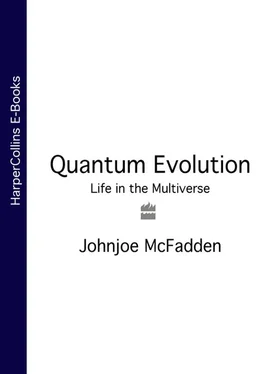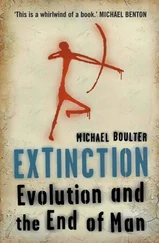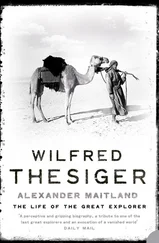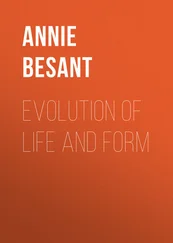7 What is Quantum Mechanics?
8 Measurement and Reality
9 What Does It All Mean?
10 The Beginning
11 The Quantum Cell
12 Quantum Evolution
13 Mind and Matter
BIBLIOGRAPHY
INDEX
ACKNOWLEDGEMENTS
ABOUT THE AUTHOR
NOTES
ABOUT THE PUBLISHER
Starlight glistens on a spaceship’s silvery hull as it cruises, unseen and unmanned, amongst the planets of a distant solar system. Guided by the encoded instructions of an alien civilization it glides past dark, rocky planetary outposts and bloated gas giants until it reaches its goal, and swings into the orbit of an inner planet. A probe is released. Retrorockets fire that adjust the probe’s trajectory, easing it slightly from the mother-ship’s geostationary orbit and turning its heat-resistant nose towards the ground. The grip of the planet’s gravity drags the probe inwards, through ever-decreasing orbits. Faster and faster it spins until, plunging through clouds, it finally emerges under a leaden sky. A parachute is released to halt the headlong dive, and the craft slowly descends to land on a rock-strewn landscape.
Minutes later, a metallic lid is drawn back, exposing a camera lens, and pictures are beamed back to the mother-ship. The camera pans across the rocky scene. The same rubble-strewn landscape is everywhere – rocks of all shapes and sizes lie sunken into fine grey sand. The air is still. Nothing moves. The camera scans the monotonous surface stretching in all directions towards the horizon – grey rocks, some precariously balanced atop others, others lie shattered, blasted by the forces of alien weather. The camera pans again, and then one rock, in shape and colour much like any other, spreads its wings and soars into the sky. The mother-ship sends a signal backward through the vastness of space, towards the distant home of the spaceship’s makers: LIFE!
The planet is, of course, Earth and the rock a bird, perhaps a rock pigeon, lost in barren desert. The story illustrates the wonder we should feel at the most remarkable phenomenon in the known universe – life. Our telescopes and space-probes return images of the universe’s many marvels – the twisted braids of Saturn’s rings, Neptune’s moon Mirander’s scarred and shattered surface, the birth of stars within the Crab Nebulae. Extraordinary as these are, they pale before the astonishing nature of life itself. And yet, all life forms are essentially rocks – made of the same materials, obeying the same laws, as the rocks, stone and sand that surround us. We are rocks that run and swim, climb and leap; that hear, touch and see; rocks that can look out into the vastness and grasp for an understanding of ourselves and the universe that made us.
In this book we will explore the nature of life and ask what animates living organisms. What is, in the words of Dylan Thomas, ‘The force that through the green fuse drives the flower’? To understand the nature of this force , we must explore life at its most fundamental level, examining the two key events in Earth’s history that made the act of writing these lines possible. The first took place nearly four billion years ago, when life emerged. The second took much longer. Living creatures had been swimming in Earth’s oceans for three and a half billion years before the mammals gave rise to a family of bipeds, the primates, and from their ranks emerged a thinking ape, man. Since that time, several million years ago, the mind of man has unravelled many mysteries concerning the universe’s workings. We watch the sun setting every evening and are confident of its rise the next day, because we know its rising and setting are caused by Earth spinning on its axis. We can look up into the night sky and know that each star is a sun like our own. Scientists can calculate the energy released from the fusion of hydrogen nuclei inside our sun, or use powerful telescopes to witness the birth of galaxies that existed billions of years ago. Remarkably however, the two key events that made our own existence possible – the emergence first of life and then of consciousness – still remain mysterious. Although we know now a great deal concerning both the workings of living cells and (though far less) the human brain, the spontaneous appearance of both phenomena remains a puzzle. This book’s aim is to explore this puzzle and examine the startling proposition that we already hold a missing piece of the puzzle. We will discover how, with this piece in place, enigmatic phenomena can be explained and light shed on life’s central mysteries.
To approach the answer, we must first understand the meaning of the question. What is life? What is the force that through the green fuse drives the flower? Living today inside the concrete and glass walls of urban environments, it is easy to ignore life’s astonishing nature. Our perceptions are formed within homes shared with domesticated animals and potted plants and only slightly modified during weekend excursions across forest-denuded hillsides or through fields of monoculture crops. The forces of the natural world are often perceived as problematic: mould creeping over damp patches of bathroom walls, weeds encroaching on flowerbeds or ants invading kitchens. But it is in our encounters with these weeds and vermin that we glimpse nature’s true character. The moulds, plants and insects invading our homes and gardens are heirs of the creatures that first colonized the oceans and proceeded to relentlessly invade every habitable niche on this planet. If we are to unravel life’s secrets, it is their nature we need to understand.
One starting point is to examine how our ancestors, unsullied by the preconceptions of our civilization, viewed their world. Man first walked on the planet several million years ago. For almost all subsequent history, man’s chief preoccupation was the gathering, snaring and hunting of nature’s bounty. Our ancestors’ day-to-day survival was contingent upon the ebb and flow of life through their landscape: the migration of herbivores, the ripening of fruit and the spawning of fish. To survive, man needed to exploit these resources, and he learned to lay traps to catch animals, grind tools to butcher them, fashion clothes from their skins and kindle fires to cook them. But the same reasoning that endowed Homo sapiens with his unique skills to exploit nature, condemned him to remain for ever discontented with mere exploitation. Man sought to understand his world. Our ancestors held nature’s procreative power in awe, worshipping gods and goddesses whom they represented as sexually exaggerated figures – such as often heavily pregnant ‘Mother Earth’ figures or priapic males. Life’s vitality was celebrated in the vigorous images of bison and reindeer that leap across the cave walls at Lascaux or Altamira. These two aspects of nature – its energy and its capacity to reproduce – clearly impressed our ancestors, and still remain mysteries of life today.
Much of subsequent history is a reflection of the changing pattern of man’s interaction with the rest of the natural world. After several million years as a hunter and gatherer, man turned his skills towards manipulating nature. About ten thousand years ago – apparently independently in several parts of the world – people discovered how to cultivate grain and domesticate wild animals. Man thereby freed himself from a perpetual march in search of a moving food supply, and established settlements. A surplus of plentiful crops allowed the rise of an aristocracy, who hoarded and guarded this resource. This enabled many to escape from the drudgery of tilling the land altogether. Warriors and servants could be paid from the royal coffers and thus persuaded to protect the lands of their kings, to build walls or erect palaces and temples. The level of social organization required for these tasks was previously unknown amongst the hunter-gatherer communities and a remarkable invention was devised to keep track of their transactions. Symbols and signs were scratched onto clay tablets, representing bales of wheat, jugs of beer, or heads of cattle, either paid to, or received from, the king’s subjects. From these modest beginnings, writing developed. Information and ideas encoded on baked clay tablets could be faithfully transmitted across space and through time. Fortunately, those ancient scribes turned from recording the jugs of beer paid to their workmen to more interesting information: the beliefs, hopes and dreams of their people. The stories they tell are our first detailed records of man’s thoughts concerning life.
Читать дальше












